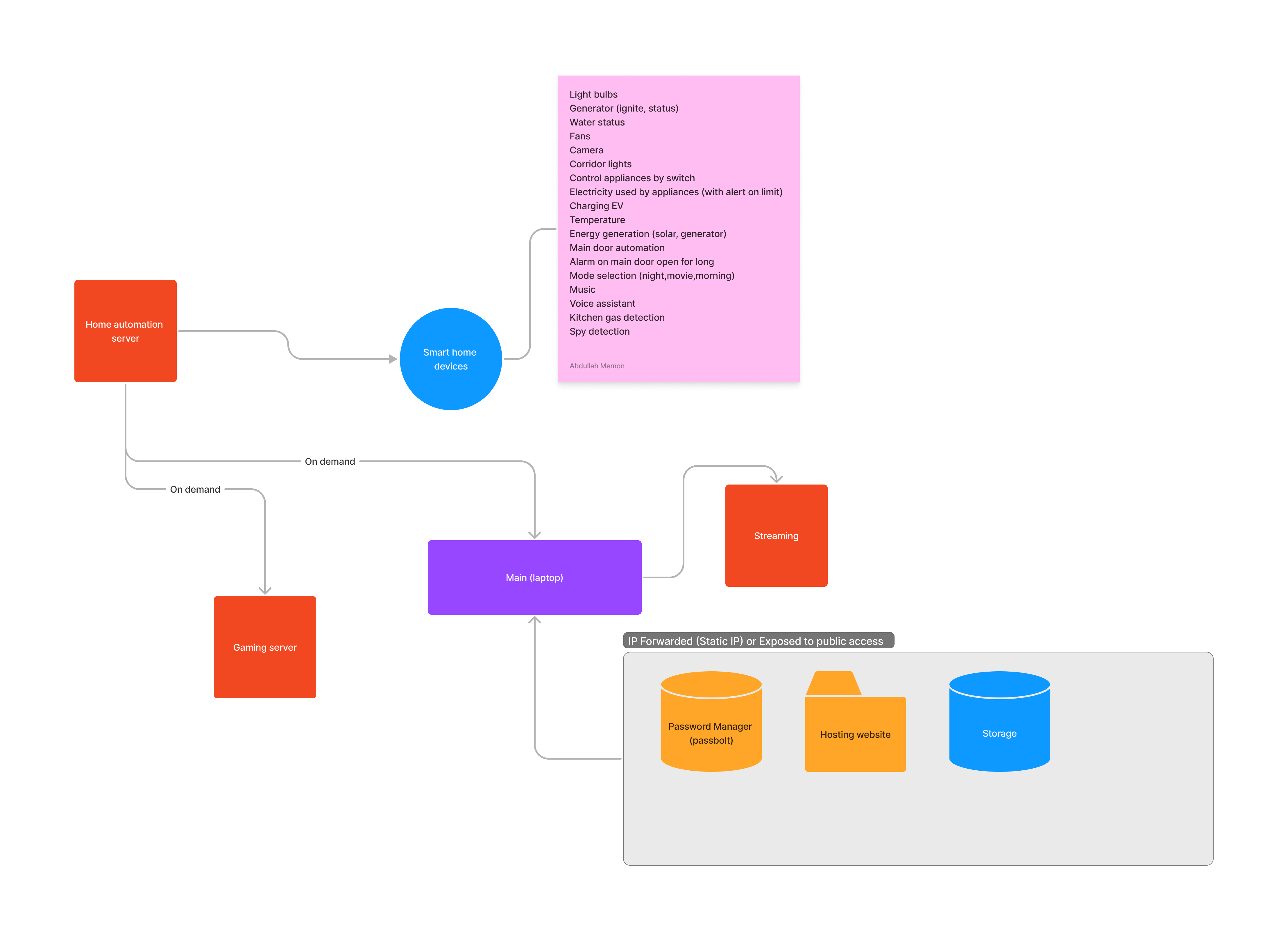Crafting a Digital Sanctum: A Contemplation on the Self-Hosted Home Server
On Crafting a Digital Sanctum
I have long felt a certain dissonance in the digital world. Our creations, our memories, our media, are so often scattered across services that feel ephemeral, held captive by subscriptions and opaque terms. It can feel as though we are merely tenants in our own digital lives. This quiet reflection has led me down a path, one that moves towards the creation of a personal sanctum. A self-hosted ecosystem, built not on convenience alone, but on sovereignty and a deep sense of deliberate design.
This is not a guide. These are simply my own thoughts for the technical mind contemplating the assembly of a bespoke home server setup. It is a meditation on building a personal cloud that is both powerful and profoundly intentional.
A Map of Contemplation
Words can only convey so much of an architecture. Before exploring the philosophy behind the components, I have sketched out a map of these thoughts. It is a visual representation of how these distinct systems relate to one another, a blueprint for this digital sanctum.
 A visual contemplation of the server architecture.
A visual contemplation of the server architecture.
A Triptych of Purpose
As the diagram illustrates, the thought of a single, monolithic machine attempting to be all things has never resonated with me. Such a device often becomes a collection of compromises, a master of nothing. Instead, I found a certain clarity in division, in creating a trinity of specialised machines. Each has its own purpose, allowing for an elegant balance of power and efficiency.
The foundation of this ecosystem is the Home Automation Server. It prioritises silence and discretion, the nervous system of the home, ever-present, yet completely unobtrusive. Its qualities are a minimal physical form and exceptionally low energy use, for it is always on, listening. It is the silent watcher that handles the small automations that bring a sense of seamlessness to the physical world, and it is the gatekeeper that awakens the more powerful machines when they are needed.
From this quiet core, my thoughts turn to the heart of the digital archive, the Main Server. This is a more capable machine, though still chosen for its efficiency over raw power. Its purpose is to be the steadfast guardian of our collective memories and culture. Here, I host a personal cloud storage solution, a private alternative to services like Dropbox, ensuring that our vital documents and photographs are held within these walls. It also serves as our streaming centre. The modern frustration of sitting down with family for a film, only to wrestle with buffering streams or sudden unavailability, is something I sought to eliminate. Using platforms like Plex or Jellyfin, this server ensures our curated library of film and television is rendered with flawless quality, whenever we wish.
Finally, there is the ephemeral arena, the Gaming Server. Power is a resource that commands respect, and high-end components have a thirst for electricity. This server, built for pure performance, remains dormant by default. It is brought to life only by a deliberate action from the automation server when its strength is truly needed. This is my philosophy of on-demand computing. Its goal is ambitious. I envision a centralised gaming rig powerful enough to stream experiences to any device in the home. I have found Parsec to be a remarkable tool for this, allowing graphically intensive titles to be played on an old laptop or even a smartphone.
The Developer’s Private Forge
Building a self-hosting infrastructure is ultimately an act of reclaiming a certain control. For a full stack developer, this extends beyond data into the very craft of software.
While my daily work unfolds on an M4 MacBook, its screen a vast 34-inch 4k VA panel, the allure of a self-hosted development environment remains. The power of my local machine is not in question, but the server offers a different kind of freedom. An instance of code-server running on the main server provides the full strength of a desktop development environment, accessible from any browser, on any device. It untethers the act of creation from a single physical place. It also presents a secure, private way to share in-progress work. The challenge, of course, is security. My current path involves exposing only a single, heavily fortified port to the world, channelling everything through a meticulously configured reverse proxy. There is an elegance to this minimalist approach.
The Sanctum's Potential
The result of this deliberate construction is not merely a collection of services, but a quiet expansion of personal capability. In essence, the potential of such a sanctum includes:
- A private vault for passwords, shielded from third-party services.
- A personal cinema, with a curated library ready at a moment's notice.
- An arena for gaming, streamed effortlessly to any screen in the home.
- A complete personal cloud for files, calendars, and contacts.
- Sovereignty over the home's security, lighting, and access.
- Oversight of essential utilities, like water levels and energy stores.
- A secluded space for personal project management and notes.
- A trusted channel for private conversations.
- A secure tunnel to the digital world through a personal VPN.
This journey is not about finding the easiest path. It is about the deliberate act of building, of truly understanding the systems we rely upon, and of crafting a digital life that is an authentic reflection of ourselves. The code, the configuration, the very architecture, it should all whisper of its purpose, an elegant solution born from quiet contemplation.
Subscribe for new articles.